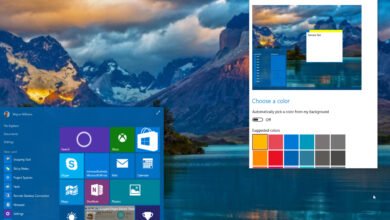Exploring Different Types of Software: A Comprehensive Overview

Software plays a vital role in our modern world, powering numerous devices and enabling us to perform various tasks efficiently. From operating systems that run our computers to applications that enhance productivity, software is ubiquitous. In this article, we will explore different types of software and gain a comprehensive overview of their functionalities and applications.
Exploring Different Types of Software
Before delving into the various types of software, let’s first define what software is. In simple terms, software refers to a collection of programs, data, and instructions that enable computers and other electronic devices to perform specific tasks or functions. It provides a means for users to interact with hardware and accomplish desired objectives.
Read more: The Importance of Software Testing and Quality Assurance in 2023
Categories of Software
Software can be broadly categorized into three main types: system software, application software, and programming software.
System Software
System software serves as the foundation for computer operations, providing essential functionalities that allow hardware and other software to work together seamlessly. Examples of system software include operating systems, device drivers, utility programs, and firmware.
Application Software
Application software is designed to fulfill specific user needs or tasks. It includes a wide range of programs, such as word processors, spreadsheets, graphic design software, video editors, and more. Application software allows users to perform tasks like document creation, data analysis, multimedia editing, and communication.
Programming Software
Programming software provides tools and environments for developers to create, debug, and maintain software applications. These tools include integrated development environments (IDEs), compilers, interpreters, and debuggers. Programming software empowers developers to write code and transform their ideas into functional software solutions.
Operating Systems
An operating system (OS) is a crucial component of system software that manages computer hardware and software resources. Different operating systems offer unique features and capabilities, catering to diverse user needs. Let’s explore some popular operating systems:
Windows
Microsoft Windows is one of the most widely used operating systems globally. It offers a user-friendly interface, extensive software compatibility, and a vast range of applications. Windows is known for its versatility and is commonly used in personal computers and laptops.
macOS
macOS, developed by Apple Inc., powers Apple’s Macintosh computers. It is known for its sleek design, seamless integration with other Apple devices, and robust ecosystem of applications optimized for creative work, productivity, and multimedia tasks.
Linux
Linux is an open-source operating system that is highly customizable and widely used in servers, embedded systems, and personal computers. It provides a high level of security, stability, and flexibility. Linux distributions like Ubuntu, Fedora, and Debian have gained popularity among both developers and general users.
Productivity Software
Productivity software encompasses a range of applications that assist users in creating, editing, organizing, and sharing various types of content. Let’s explore some common productivity software:
Word Processors
Word processors, such as Microsoft Word and Google Docs, are used for creating, editing, and formatting text-based documents. They provide features like spell-checking, grammar-checking, formatting options, and collaboration tools, making it easier to create professional-looking documents.
Spreadsheets
Spreadsheets, like Microsoft Excel and Google Sheets, enable users to organize and analyze numerical data. They offer functions for mathematical calculations, data visualization, and data manipulation. Spreadsheets are commonly used for financial analysis, budgeting, inventory management, and statistical analysis.
Presentation Software
Presentation software, such as Microsoft PowerPoint and Google Slides, allows users to create visually engaging slideshows for educational, business, or entertainment purposes. These tools provide templates, animation effects, multimedia embedding, and slide transitions to enhance presentations.
Graphics and Multimedia Software
Graphics and multimedia software are used for creating and editing visual and audio content. These tools enable users to manipulate images, videos, and audio files. Let’s explore some common types of graphics and multimedia software:
Image Editing Software
Image editing software, such as Adobe Photoshop and GIMP, provides powerful tools for enhancing and manipulating digital images. Users can adjust colors, remove imperfections, add effects, and create complex compositions. Image editing software is widely used in photography, graphic design, and digital art.
Video Editing Software
Video editing software, like Adobe Premiere Pro and Final Cut Pro, enables users to edit and enhance video footage. These tools offer features for trimming, merging, adding transitions, applying visual effects, and adjusting audio. Video editing software is essential for professionals and enthusiasts in the film industry, vlogging, and video production.
Audio Editing Software
Audio editing software, such as Audacity and Adobe Audition, allows users to record, edit, and enhance audio files. These tools offer features like noise reduction, equalization, audio effects, and multi-track editing. Audio editing software is widely used by musicians, podcasters, sound designers, and audio engineers.
Communication Software
Communication software facilitates communication and collaboration among individuals or groups. It enables users to exchange messages, share files, conduct video conferences, and more. Let’s explore some common communication software:
Email Clients
Email clients like Microsoft Outlook, Gmail, and Mozilla Thunderbird allow users to send, receive, and manage email messages. These clients offer features such as organizing emails into folders, filtering spam, scheduling emails, and syncing across devices. Email remains a popular mode of communication for personal and professional purposes.
Instant Messaging
Instant messaging applications, such as WhatsApp, Slack, and Facebook Messenger, provide real-time text-based communication. They allow users to send messages, make voice and video calls, share files, and create group chats. Instant messaging has become an integral part of personal and business communication.
Video Conferencing
Video conferencing software, like Zoom, Microsoft Teams, and Google Meet, enables users to hold virtual meetings, webinars, and online presentations. These tools offer features such as screen sharing, chat, breakout rooms, and recording. Video conferencing has gained immense popularity, especially with the rise of remote work and distance learning.
Database Software
Database software allows users to store, organize, and retrieve large amounts of data efficiently. It provides a structured approach to managing data, ensuring data integrity and security. Database software is widely used in businesses, educational institutions, and research organizations.
Web Browsers
Web browsers are software applications that allow users to access and navigate websites on the internet. Popular web browsers include Google Chrome, Mozilla Firefox, and Safari. They provide features like tabbed browsing, bookmarks, privacy settings, and extensions, enhancing the user’s web browsing experience.
Mobile Apps
Mobile apps are software applications designed specifically for mobile devices, such as smartphones and tablets. They offer various functionalities and cater to diverse user needs, including social media, entertainment, productivity, gaming, and more. Mobile apps are typically downloaded and installed from app stores, such as the Apple App Store and Google Play Store.
Gaming Software
Gaming software includes video games and gaming platforms that provide interactive entertainment experiences. It encompasses a wide range of genres, from casual mobile games to immersive console and PC games. Gaming software continues to evolve, incorporating advanced graphics, realistic physics, online multiplayer capabilities, and virtual reality experiences.
Open Source Software
Open source software refers to software that is freely available for use, modification, and distribution. It is developed by a community of volunteers or organizations and promotes collaboration and transparency. Open source software encourages innovation, flexibility, and cost-effectiveness, as users can customize and adapt the software to suit their specific requirements.
Software Development Life Cycle
The software development life cycle (SDLC) is a process followed by software development teams to plan, design, develop, test, deploy, and maintain software applications. Let’s explore the key stages of the SDLC:
Requirements Gathering
In this stage, the development team identifies and documents the requirements of the software based on user needs, business goals, and technical constraints. This involves gathering information, conducting interviews, and creating a detailed requirements document.
Design and Prototyping
In the design stage, the development team creates a blueprint of the software solution, including its architecture, user interface design, and data structures. Prototypes or mockups may be created to visualize the software’s look and feel and gather feedback from stakeholders.
Coding and Implementation
In the coding stage, developers write the actual code based on the design specifications. They use programming languages, frameworks, and development tools to translate the requirements into functional software.
Testing and Quality Assurance
Testing is a crucial stage where the software is evaluated to ensure it functions as intended, is free of bugs and errors, and meets the specified requirements. Different types of testing, such as unit testing, integration testing, and user acceptance testing, are performed to validate the software’s quality.
Deployment and Maintenance
Once the software passes testing, it is deployed to the production environment or made available to end-users. Ongoing maintenance and support activities are carried out to address issues, release updates, and ensure the software remains secure and performs optimally.
Read more: The Best Software for Windows 11 in 2023
Conclusion
In conclusion, software encompasses a wide range of applications that enable us to perform various tasks efficiently. From system software that provides the foundation for computer operations to application software that caters to specific user needs, each type of software plays a vital role in our daily lives. Whether it’s productivity software for creating documents and analyzing data, communication software for staying connected, or gaming software for entertainment, software continues to evolve and shape our digital experiences.
FAQs
What is the difference between system software and application software?
System software provides the foundation for computer operations, managing hardware and software resources, while application software fulfills specific user needs or tasks.
What are some popular operating systems?
Some popular operating systems include Windows, macOS, and Linux.
What are some examples of productivity software?
Examples of productivity software include word processors, spreadsheets, and presentation software.
What is open-source software?
Open source software refers to software that is freely available for use, modification, and distribution.
What is the software development life cycle (SDLC)?
The software development life cycle is a process followed by development teams to plan, design, develop, test, deploy, and maintain software applications.











